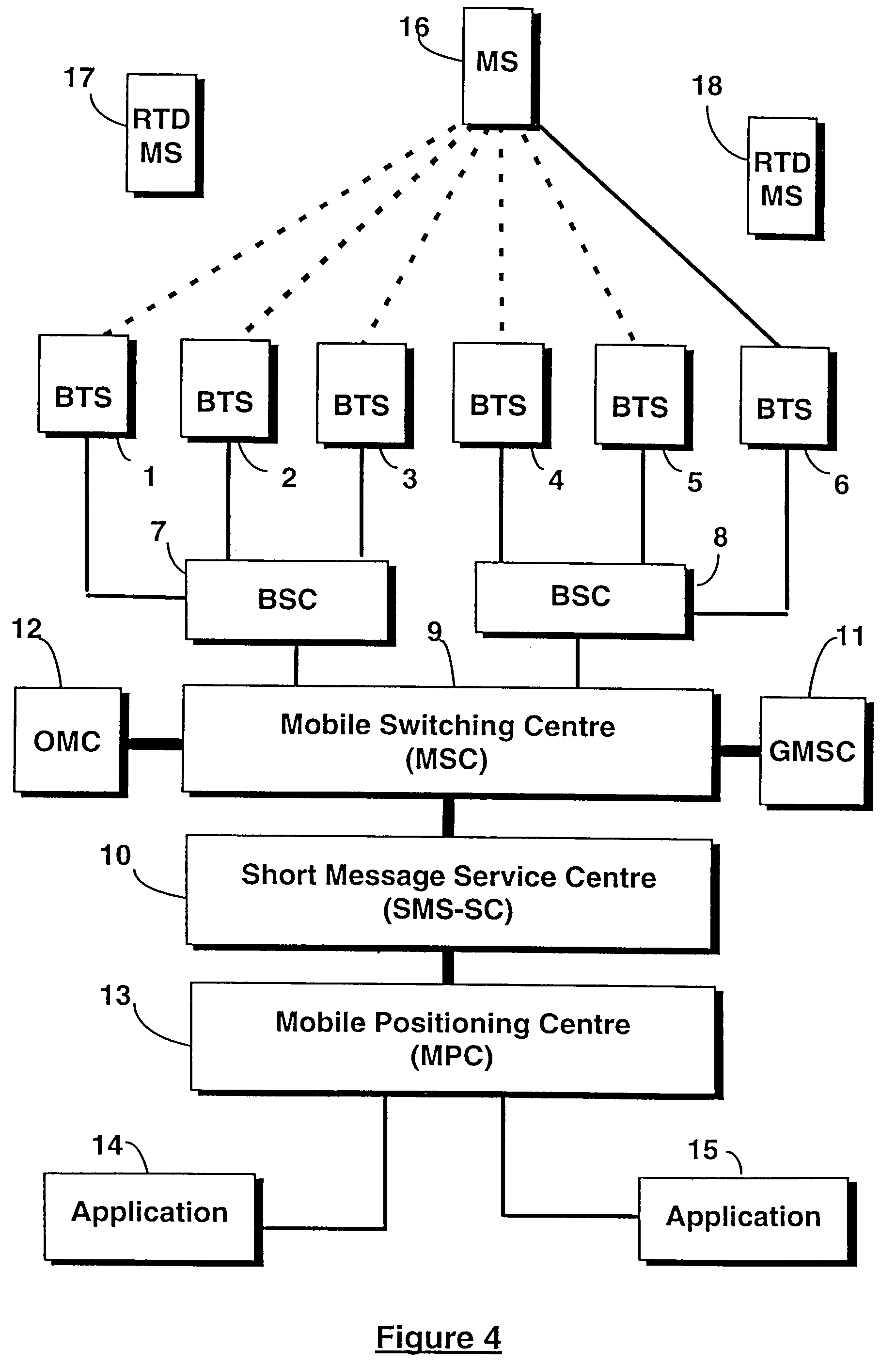Cellular radio locator system
a radio locator and cellular technology, applied in the field of cellular radio locator systems, can solve the problems of increasing the cost, size and power consumption of a ms, low signal level inside buildings, and difficulty in obtaining a clear path to at least three satellites in built-up urban areas, so as to reduce the disadvantage of poor measurement geometry or other disadvantages
- Summary
- Abstract
- Description
- Claims
- Application Information
AI Technical Summary
Benefits of technology
Problems solved by technology
Method used
Image
Examples
Embodiment Construction
[0036]A typical GSM network that is designed to implement the present invention is shown in FIG. 4. The network has inter alia Base Transceiver Stations (BTS) 1 to 6, Base Station Controllers (BSC) 7, 8 (each BSC controlling a subset of BTSs), a Mobile Switching Centre (MSC) 9 linked to the two BSCs 7, 8, and a Short Message Service-Service Centre (SMS-SC) 10.
[0037]The network uses a Home Location Register (HLR) and a Visitor Location Register (VLR), not shown in FIG. 4, to maintain the status and LA of a MS, or the address of a foreign network if the MS is not registered to its home network. The MSC 9 of the network communicates with additional networks, including a Public Switched Telephone Network (PSTN), through a Gateway MSC (GMSC) 11, and with an Operation and Maintenance Centre (OMC) 12. The OMC 12 maintains and updates information in the network. A Mobile Positioning Centre (MPC) 13 is added to the conventional GSM network architecture and is used by location applications 14...
PUM
 Login to View More
Login to View More Abstract
Description
Claims
Application Information
 Login to View More
Login to View More - R&D
- Intellectual Property
- Life Sciences
- Materials
- Tech Scout
- Unparalleled Data Quality
- Higher Quality Content
- 60% Fewer Hallucinations
Browse by: Latest US Patents, China's latest patents, Technical Efficacy Thesaurus, Application Domain, Technology Topic, Popular Technical Reports.
© 2025 PatSnap. All rights reserved.Legal|Privacy policy|Modern Slavery Act Transparency Statement|Sitemap|About US| Contact US: help@patsnap.com



